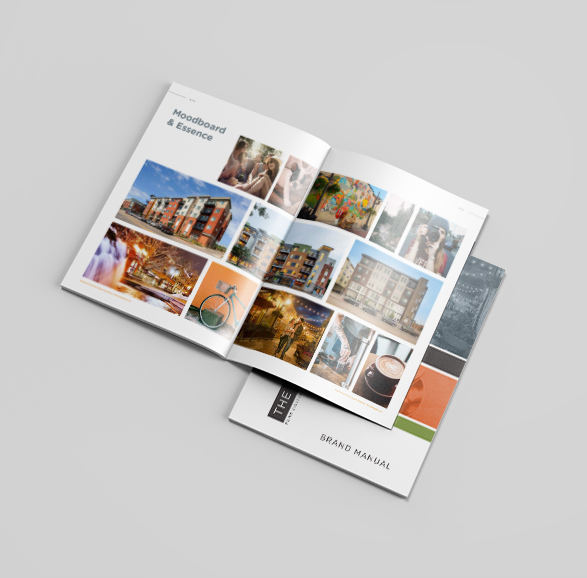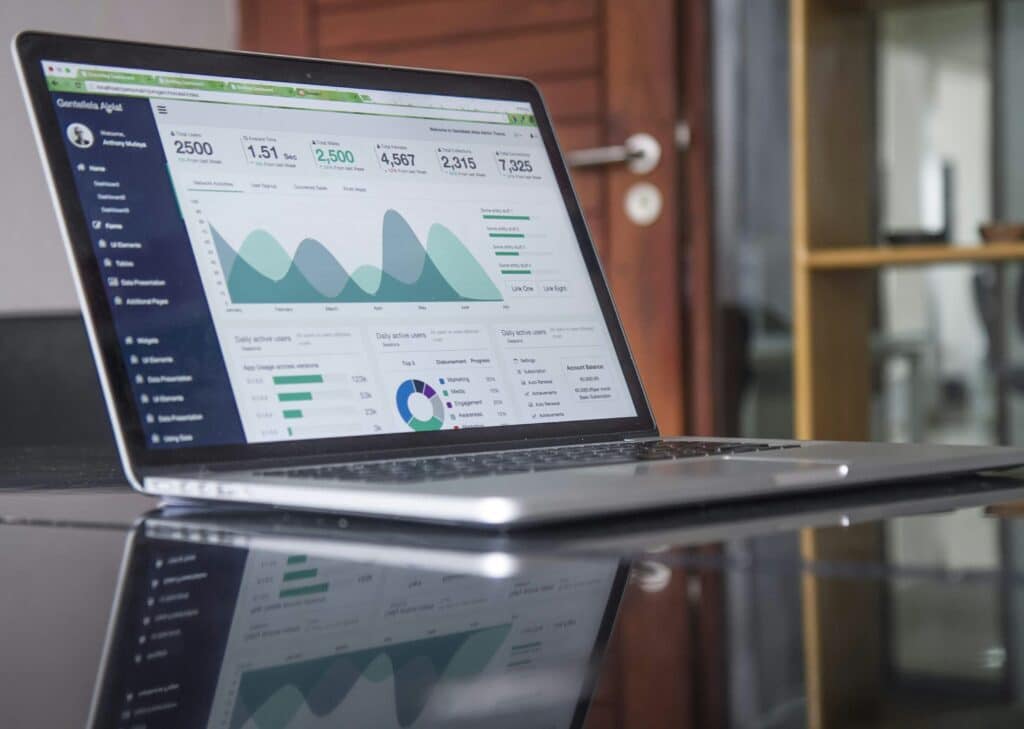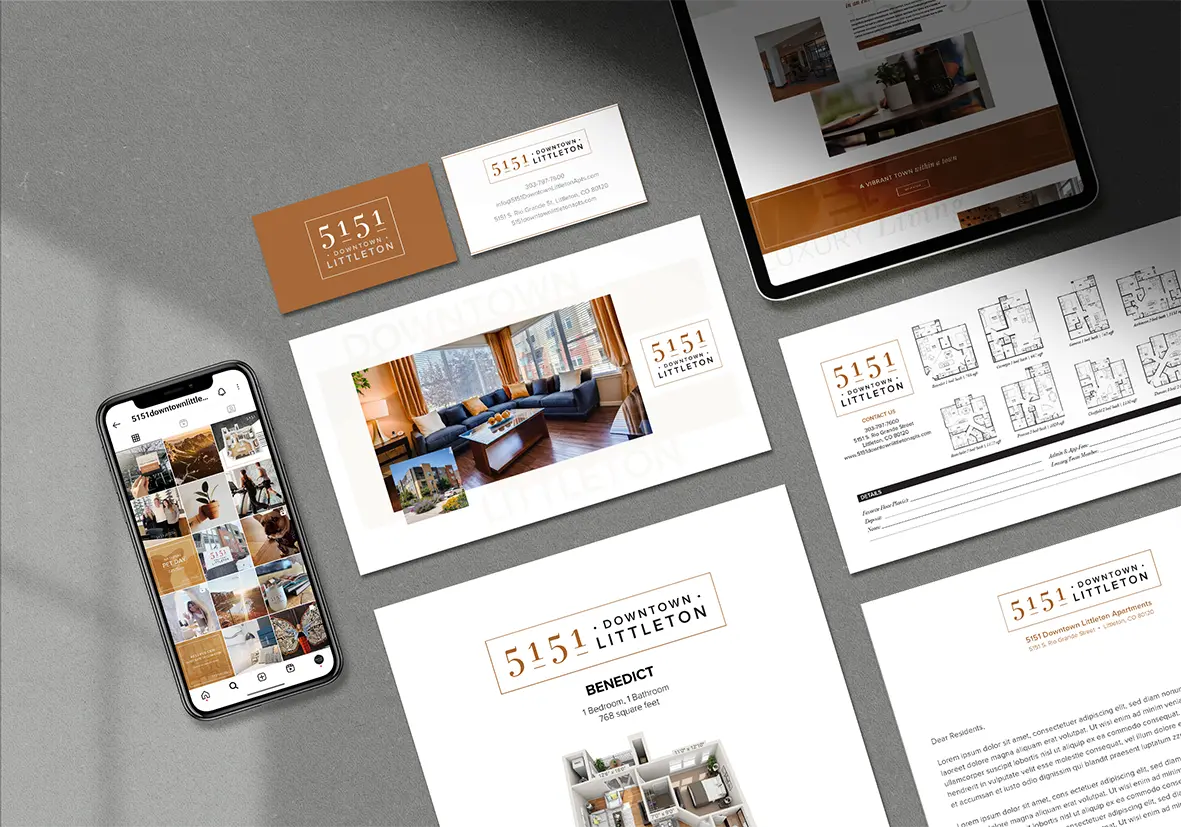The multifamily marketing industry is getting busier year on year. As more developments pop up and renter expectations continue to rise, standing out in this crowded space has never been more challenging—or more important. These days, attracting residents takes more than just listing vacancies on a few websites and hoping for the best; it takes a carefully built multifamily marketing plan.
Today’s renters are informed. They’re scrolling through listings, comparing amenities, reading reviews, and looking for properties that feel like a good fit for their lifestyle. If your property isn’t showing up with a compelling story and a strong marketing strategy behind it, chances are you’re losing leads to the competition.
In this guide, we’ll break down how to build a multifamily marketing plan step by step. By the end of it, you’ll come away with a clear roadmap to help you boost traffic, improve conversions, and create lasting success for your property.
What is Multifamily Marketing?
Multifamily marketing is all about promoting apartment communities and multi-unit rental properties to attract and retain residents. At its core, it’s the strategy behind filling units and creating a strong brand presence in your local rental market.
Unlike single-family rentals, which typically focus on marketing to individual households, multifamily properties need to appeal to a broader audience. You’re not just selling a unit—you’re selling a lifestyle and a community. Prospective renters are considering not only the space itself but also the shared amenities, neighborhood vibe, and overall living experience.
Multifamily marketing covers a wide range of tactics, from digital efforts like paid ads and SEO to offline strategies like signage, referral programs, and community events. It’s a blend of creative branding, targeted messaging, and data-driven decision-making that helps multifamily property management companies stand out and consistently drive qualified leads.
In short, multifamily marketing is more than just filling vacancies. It’s about positioning your property as a desirable place to live—and keeping it top of mind for renters in a highly competitive market.
How Do You Market a Multifamily Property?
Marketing a multifamily property isn’t just about getting eyes on your listing—it’s about creating a full experience that resonates with the right audience. The process starts with understanding what makes your property unique and who you’re trying to reach.
First, you need to get clear on your target renters. Are you speaking to young professionals, families, students, or retirees? Each group has different priorities—whether it’s proximity to nightlife, schools, or public transit—and your marketing should reflect that.
Next comes your property’s positioning. What sets it apart from others in the area? Maybe it’s resort-style amenities, pet-friendly policies, or a focus on community events and resident engagement. Identifying your property’s unique selling points (USPs) is key.
From there, you’ll want to build a multichannel strategy. In today’s market, this often means combining digital tactics like SEO, paid social ads, and reputation management with tried-and-true offline efforts like hosting events, leveraging signage, and developing referral programs. A well-rounded approach ensures you’re reaching prospects wherever they are—online or in the neighborhood.
It’s all about consistency and follow-through. Marketing doesn’t stop when someone tours the property; it extends through nurturing leads, closing leases, and even creating a positive experience that encourages resident renewals and word-of-mouth referrals.
Apartment Marketing Ideas
Before diving into the step-by-step plan, it helps to have a toolbox of proven marketing ideas that are often used in the multifamily space. These are the creative tactics that can complement your broader strategy and give your property more visibility.
Here are some tried-and-true apartment marketing ideas to consider:
- Host Resident Events: Open houses, movie nights, or seasonal events (like a summer BBQ or holiday party) can create a buzz and attract both current residents and prospects.
- Partner with Local Businesses: Team up with nearby coffee shops, gyms, or restaurants to offer exclusive discounts to your residents. It builds community while also tapping into the business’s customer base.
- Create Video Tours and Drone Footage: A well-shot video or aerial view of your property can showcase the lifestyle and amenities in a way that static images just can’t.
- Launch a Referral Program: Offer current residents incentives like rent credits or gift cards for referring friends or family who sign a lease.
- Leverage Influencer Collaborations: Micro-influencers in your city can highlight your community to their followers, bringing authentic, local visibility.
- Offer Move-in Incentives: Specials like a free month’s rent, waived application fees, or discounted deposits are always attention-grabbers.
- Corporate Leasing Partnerships: Build relationships with nearby employers to offer corporate housing deals or discounts for their employees.
- Run Seasonal Campaigns: Tailor promotions around key dates like back-to-school season, holidays, or peak moving months.
- Sponsor Local Causes or Events: Sponsor a charity event or community clean-up to build goodwill and positive brand association.
These ideas can stand alone or plug into a larger marketing framework. The key is to pick the ones that resonate most with your target audience and market.
Step-by-Step Guide: Multifamily Marketing Plan Template
Step 1: Define Your Properties and Target Audience
Before you can effectively market your multifamily property, you need to understand exactly what you’re working with—and who you’re marketing to.
Start by taking a close look at your properties. What are its key features? Is it a luxury community with high-end finishes and resort-style amenities? Or is it a value-driven property aimed at budget-conscious renters? Consider location, unit types, pricing, pet policies, community spaces, and any standout amenities. This audit will help you zero in on what makes your property unique.
Once you have a clear picture of your property’s identity, the next step is defining your target audience. Who is most likely to rent here? Is it young professionals looking for convenience and modern design? Families searching for good school districts and kid-friendly spaces? Students who prioritize affordability and proximity to campus? Building detailed renter personas will help you tailor your marketing messages and select the right channels.
Don’t forget to conduct a competitive analysis. Look at similar properties in your market—what are they offering, and how are they positioning themselves? Identifying gaps or opportunities in the local landscape can give you a competitive edge.
When you know both your property’s strengths and your audience’s needs, you can create messaging that genuinely connects—and that’s the foundation of every successful marketing plan.
Step 2: Set Clear Marketing Goals and KPIs
With your property and target audience defined, it’s time to set some clear, measurable goals. Without specific objectives, even the most creative marketing strategy can lack focus and direction.
Ask yourself: What does success look like for this property? Is it hitting 95% occupancy within the next six months? Reducing vacancy time between leases? Increasing brand awareness in a new market? Your goals will vary depending on whether you’re managing a new lease-up, stabilizing an existing property, or trying to improve resident retention.
Once your goals are outlined, you’ll need to attach KPIs (Key Performance Indicators) to each one. These are the metrics you’ll use to track progress and make informed adjustments. Common KPIs in multifamily marketing include:
- Leads generated (number of inquiries through your website, ads, etc.)
- Lead-to-lease conversion rate
- Cost-per-lead (CPL)
- Occupancy or pre-leasing rate
- Website traffic and engagement metrics
- Social media growth and engagement
- Online review ratings
It’s important to set KPIs that are realistic and aligned with your market and property class. A luxury high-rise downtown may need different benchmarks than a suburban garden-style community.
Don’t forget to attach a timeline to your goals. Whether it’s 30, 60, or 90 days—or a full year—timelines help keep your team accountable and allow you to assess what’s working (and what’s not) along the way.
Read this to learn more about digital and social media management!
Step 3: Build Your Brand Identity

In a market where renters have dozens of options, a strong brand identity is what helps your property stand out. It’s more than just a logo—it’s the overall impression people get when they encounter your community, online or in person.
Start with your Unique Selling Proposition (USP). What is the one thing your property does better than anyone else nearby? It could be luxury amenities, unbeatable location, exceptional resident services, or a unique community vibe. Your USP will become the foundation of your messaging.
Next, develop your brand assets. This includes:
- Visual identity: your logo, color palette, and typography.
- Voice and tone: Is your brand modern and upscale? Friendly and approachable? Professional and service-oriented? Make sure the tone fits your audience.
- Photography and video style: Do you want sleek, high-end visuals or more community-focused lifestyle imagery?
Consistency is key here. Every touchpoint—from your website and social media to signage and brochures—should align with this identity. Renters should immediately recognize your brand no matter where they engage with it.
Brand identity also influences how you position your property against competitors. If your neighboring property is focusing on affordability, maybe you position yours as offering a premium living experience. If they’re emphasizing family-friendly amenities, you might lean into modern design and tech-savvy features for younger professionals.
Read our resources to learn about apartment website design or for information about managed WordPress hosting for a multifamily site.
Step 4: Create a Multichannel Marketing Strategy
With your brand locked in, it’s time to get your message out there—and that means using multiple marketing channels to reach potential renters wherever they are. A well-rounded strategy combines both digital and offline efforts to create a strong, visible presence in the market.
Digital Marketing
- Website Optimization: Your property’s website is often the first stop for prospective renters. Make sure it’s mobile-friendly, fast-loading, and easy to navigate. Include professional photos, virtual tours, floor plans, and clear calls to action (e.g., “Schedule a Tour”).
- Search Engine Optimization (SEO): Optimize your website and local listings (like Google Business Profile) so your property appears when renters search for apartments in your area.
- Paid Advertising: Invest in Google Ads, Facebook/Instagram ads, or geotargeted campaigns to reach renters actively looking for housing. Retargeting ads are also key for re-engaging visitors who didn’t convert the first time.
- Social Media Marketing: Showcase your community on platforms like Instagram, Facebook, and even TikTok. Highlight resident events, property features, staff introductions, and neighborhood perks to create an approachable and engaging presence.
- Email Campaigns: Build a lead nurturing flow for prospects who’ve shown interest but haven’t yet signed a lease. Drip campaigns with property updates, special offers, or local insights can help keep your property top of mind.
- Online Reputation Management: Respond promptly to reviews on platforms like Google and Yelp. A strong online reputation can significantly influence a renter’s decision.
Offline Marketing
- On-Site Signage: Professional, well-placed signage (banners, sandwich boards, window decals) helps attract walk-by traffic and adds credibility to your property.
- Local Events and Partnerships: Host or sponsor local events, open houses, or networking mixers—partner with neighborhood businesses to cross-promote services or offer exclusive resident perks.
- Referral Programs: Encourage current residents to refer friends and family by offering incentives like rent credits, gift cards, or other rewards.
- Direct Mail and Print Collateral: Flyers, brochures, or postcards sent to targeted neighborhoods or handed out during events can still be effective, especially in suburban or less digitally focused markets.
Step 5: Implement Technology and Automation
Technology plays a huge role in modern multifamily marketing, helping you streamline processes, respond faster to prospects, and create a smoother leasing experience overall. The right tools can save time and help you capture more qualified leads.
Leasing CRM and Property Management Software
A good CRM (Customer Relationship Management) system designed for multifamily properties—such as RentCafe, Knock, or Funnel—helps you manage leads, automate follow-ups, and track renter interactions in one place. Integrating your CRM with your property management software can also reduce friction between marketing, leasing, and operations teams.
Automation Tools
Automating routine tasks lets you focus on building relationships rather than chasing paperwork. Here are a few ways automation can make an impact:
- Automated Email Workflows: Set up drip campaigns for prospects based on where they are in the funnel—e.g., initial inquiry, property tour follow-up, or final leasing push.
- Chatbots and AI Leasing Assistants: AI-powered tools can answer common questions 24/7, qualify leads, and even schedule tours directly from your website or social media channels.
- Self-Scheduling Tools: Let prospects book their own property tours through an online calendar. This reduces back-and-forth and makes it easier for leads to take the next step.
Virtual Tours and 3D Floor Plans
With more renters starting their search online, offering virtual tours and interactive 3D floor plans is a must. These tools give prospects a realistic sense of your property without them needing to visit in person, helping to pre-qualify leads and shorten the leasing cycle.
Step 6: Monitor, Optimize, and Adjust

Once your marketing plan is live, the work isn’t over. In fact, this is where you separate a “set-it-and-forget-it” approach from a high-performing strategy. Continuous monitoring and optimization are essential to making sure your efforts stay effective and your ROI stays strong.
Track Performance Regularly
Use tools like Google Analytics, your CRM, and ad platform dashboards to keep tabs on how each marketing channel is performing. Are your paid ads driving qualified traffic? Is your website converting visitors into tour bookings? Are certain lead sources outperforming others?
Key metrics to focus on:
- Cost-per-lead (CPL)
- Conversion rates (lead-to-tour, tour-to-lease)
- Website engagement (bounce rate, time on page)
- Social media engagement and reach
- Occupancy trends over time
A/B Testing
Small tweaks can make a big difference. Test different versions of ad creatives, website landing pages, email subject lines, or even leasing incentives to see which ones generate better results. A/B testing helps you refine messaging and boost conversions.
Refine and Scale What Works
If you notice certain campaigns or tactics consistently outperforming others, allocate more budget and resources toward them. At the same time, be ready to pivot from underperforming strategies or test new ideas to fill gaps.
Stay Agile
The rental market is always shifting based on seasonality, economic trends, and renter behaviors. A flexible marketing plan that’s regularly reviewed and optimized will help you stay ahead of competitors and keep your occupancy levels healthy.
In short: analyze, adjust, and repeat.
How Brindle Digital Can Help Elevate Your Multifamily Marketing

At Brindle Digital, we specialize in helping multifamily communities attract more qualified leads and lease units faster. With a deep understanding of the rental market, we partner with properties nationwide to craft modern, high-performing marketing strategies.
Here’s how we can support your property’s success:
- Custom Apartment Websites
We design fast, SEO-optimized websites that showcase your property’s unique personality. From sleek custom builds to affordable templated options, we create user-friendly websites that drive leads and improve conversions. - Branding & Creative Design
Your brand is more than a logo. We help multifamily communities stand out with complete branding packages—including logo design, print collateral, and digital assets—that create a consistent, professional identity renters will trust. - Social Media & Paid Advertising
From organic social media management to hyper-targeted paid campaigns, we help properties grow awareness, engage prospects, and fill vacancies faster.
At Brindle, our average client sees a 47% increase in lead generation. Ready to make your property stand out? Get started to learn how we can help you craft a marketing strategy that works.
Conclusion
A successful multifamily marketing plan is built on a solid understanding of your property and your audience and a clear, actionable strategy. By following the steps outlined above, you’ll be well-positioned to attract qualified renters and stay competitive in today’s fast-moving market.
Ready to get started? Your next lease could be just one great campaign away.
